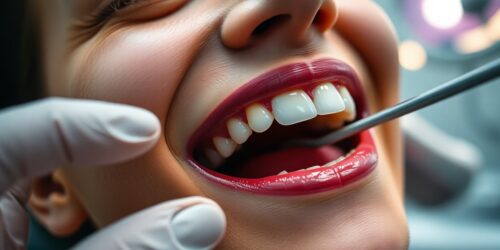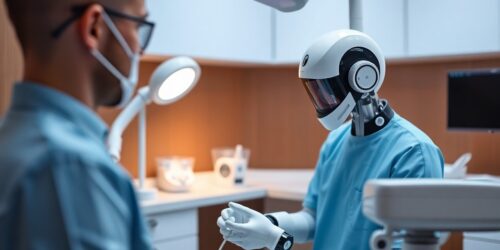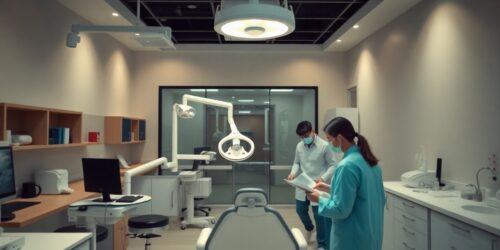How Is 3D Printing Transforming The Production Of Dental Implants And Crowns?
There’s a significant shift happening in the dental industry, particularly in the way you receive dental implants and crowns. 3D printing technology is revolutionizing production processes, making them faster, more cost-effective, and personalized for your unique dental needs. This innovative approach not only enhances precision in manufacturing but also reduces the time you spend in the dentist’s chair. Discover how 3D printing is setting new standards for dental restoration and what it means for your oral health and overall experience.
Key Takeaways:
- Customization: 3D printing allows for highly personalized dental implants and crowns, tailored to the unique anatomy of each patient.
- Speed: The production process is significantly faster with 3D printing, reducing the time needed for creating and fitting dental devices.
- Cost-effectiveness: By streamlining the manufacturing process, 3D printing lowers costs associated with producing dental implants and crowns, making them more accessible.
- Material diversity: Advanced materials used in 3D printing enhance the strength, durability, and aesthetic appeal of dental fixtures.
- Precision: The technology ensures high levels of accuracy in the design and production of dental implants and crowns, leading to better patient outcomes.
Overview of 3D Printing Technology
A
Definition and Principles
On a fundamental level, 3D printing, or additive manufacturing, is a process where material is deposited layer by layer to create a three-dimensional object from a digital file. This technology enables precise customization and allows dental professionals to produce highly specific dental implants and crowns tailored to individual patient needs.
Types of 3D Printing Used in Dentistry
The various types of 3D printing technologies used in dentistry include:
- Stereolithography (SLA)
- Digital Light Processing (DLP)
- Fused Deposition Modeling (FDM)
- Selective Laser Sintering (SLS)
- Binder Jetting
Assume that knowing these methods will help you understand the diverse applications of 3D printing in dental practices.
| 3D Printing Technology | Application in Dentistry |
| Stereolithography (SLA) | High precision dental models and prototypes |
| Digital Light Processing (DLP) | Efficient production of dental restorations |
| Fused Deposition Modeling (FDM) | Creating temporary crowns or bridges |
| Selective Laser Sintering (SLS) | Durable dental prosthetics |
| Binder Jetting | Fabrication of complex multi-material dental devices |
A better understanding of these technologies allows you to appreciate how they cater to distinct needs within the dental industry.
- Each method has its own benefits and limitations.
- Choosing the right technique is vital for success.
- Levels of detail and material versatility vary.
- Some methods are more suitable for production scale than others.
- Innovation is driving the evolution of these technologies.
Assume that you want to optimize your practice; knowing the right printing method influences your success.
Benefits of 3D Printing in Dental Implant Production
It’s evident that 3D printing is revolutionizing the production of dental implants and crowns, offering unmatched advantages. This innovative technology enhances customization, precision, cost-effectiveness, and time efficiency, resulting in a seamless experience for both patients and dental professionals. By integrating 3D printing into your practice, you can provide personalized solutions that improve overall patient satisfaction while streamlining your workflow.
Customization and Precision
Implant design through 3D printing allows for exceptional customization and precision, tailored to the unique anatomy of each patient. The ability to create implants that closely match your specifications not only enhances fit but also improves functionality and aesthetics. This level of detail ensures a more comfortable experience, leading to higher success rates in dental procedures.
Cost-Effectiveness and Time Efficiency
Around 3D printing reduces production costs and significantly shortens lead times for dental implants and crowns. This advancement means that you can offer your patients high-quality solutions without the typical financial burdens associated with traditional methods.
A key advantage of 3D printing in dental implant production is its ability to minimize material waste and labor costs, resulting in savings that can be passed on to your patients. With rapid prototyping capabilities, you can quickly produce prototypes and finalize designs, thereby reducing the time needed for implant production. This efficiency not only increases patient turnover but also allows you to focus on providing exceptional care, enhancing your practice’s reputation in the process.
The Role of 3D Printing in Creating Dental Crowns
To understand how 3D printing revolutionizes dental crown production, consider its ability to create highly precise and customized designs. This technology reduces the time and effort typically involved in the process, allowing for quicker turnaround and improved patient satisfaction. As highlighted in the article 3D Printing of Dental Prostheses: Current and Emerging …, the efficiency and customization offered by 3D printing are reshaping the landscape of dental restoration.
Material Options and Innovations
The development of 3D printing technologies has led to a variety of innovative material options for dental crowns. You can now choose from materials such as resin, ceramics, and metal composites, each providing distinct advantages regarding durability, aesthetics, and comfort. These advancements enable your dental professional to select the perfect material to suit your specific needs and preferences.
Enhancing Aesthetic Outcomes
Among the many benefits of 3D printing in dental crowns is its potential to enhance aesthetic outcomes dramatically. With advanced printing techniques, you receive crowns that closely mimic the natural appearance of your teeth, providing a more seamless integration into your smile.
Material choices play a significant role in enhancing the aesthetic quality of dental crowns. By utilizing high-quality resin and ceramic materials, 3D printing can produce crowns that are not only visually appealing but also closely match the color and translucency of your natural teeth. This results in crowns that blend seamlessly with your smile, giving you a more natural and confident appearance. With the right selection of materials and cutting-edge printing techniques, you can achieve personalized dental solutions that cater to your individual aesthetic desires.
Case Studies: Successful Implementation of 3D Printing in Dentistry
Now, let’s explore some compelling case studies showcasing the success of 3D printing in dentistry:
- Case Study 1: A dental clinic increased efficiency by 40% in crown production after integrating 3D printing.
- Case Study 2: An orthodontic practice reduced appliance production costs by 30% using 3D printed models.
- Case Study 3: A maxillofacial surgery center achieved a 95% patient satisfaction rate with custom-printed implants.
- Case Study 4: A university dental program reported a 50% reduction in material waste due to precise 3D printing techniques.
To learn more about the transformational impact of 3D technology, check out How 3D Printing is Changing the Dental Industry.
Clinical Examples
On several occasions, dental professionals have reported remarkable outcomes after integrating 3D printing into their practices. For example, a clinic noted that they could produce dental models in just a few hours, significantly speeding up the treatment process for patients.
Patient Outcomes
Before adopting 3D printing, many dental practices faced prolonged treatment times and higher costs. After the implementation, patient feedback highlighted shorter waits and improved comfort during procedures.
Successful cases show that the adoption of 3D printing technology can lead to improved patient experiences. Patients have reported shorter procedure times and fewer follow-up visits, which contribute to overall satisfaction. Additionally, custom implants and crowns tailored to individual anatomy enhance fit and functionality, promoting better long-term outcomes. Your practice can also achieve these benefits by utilizing 3D printing to streamline operations and focus on patient-centered care.
Challenges and Limitations of 3D Printing in Dentistry
Many dentists and dental laboratories are eager to embrace 3D printing technology, but several challenges and limitations remain. These include technical barriers, regulatory considerations, and the need for proper training. While the benefits are evident, understanding these hurdles is necessary for successfully integrating 3D printing into your practice.
Technical Barriers
Along with the advantages of 3D printing, there are significant technical barriers that can impede its widespread adoption in dentistry. Issues such as material compatibility, printer accuracy, and post-processing requirements can complicate the workflow, making it necessary for you to stay informed about the latest advancements in 3D printing technologies.
Regulatory Considerations
With the rapid evolution of 3D printing, navigating the regulatory landscape poses its own set of challenges. Regulatory bodies require that dental products meet specific standards to ensure safety and efficacy, which can affect your ability to use 3D printing in your practice.
Indeed, you should be aware that regulatory frameworks surrounding 3D printing in dentistry are still developing. This can create uncertainty regarding compliance with federal and state guidelines. Staying abreast of these regulations and collaborating with manufacturers who meet required standards can help mitigate risks and enhance your practice’s credibility. You may also benefit from joining professional organizations that provide resources and updates on regulatory changes, ensuring that your use of 3D printing adheres to industry best practices.
Future Trends in 3D Printing for Dental Solutions
Once again, 3D printing is set to revolutionize dentistry, enhancing the way dental implants and crowns are produced. Future developments will likely focus on refining materials and techniques, resulting in even greater precision and customization. For more insights, check out 3D Printing and the Dental Crown Manufacturing Process. You can expect advancements in speed and cost efficiency, providing greater accessibility for dental practices and their patients.
Technological Advancements
Any advancements in technology will continue to improve 3D printing capabilities in dentistry. Enhanced software and hardware innovations will enable more complex designs and faster production times, allowing you to provide faster service to your patients while maintaining high-quality standards.
Potential for Broader Applications
Across the dental industry, the potential for broader applications of 3D printing technology is expanding. As its capabilities grow, you may find opportunities to use 3D printing for creating not just crowns and implants, but also other customized dental products like orthodontic devices and even surgical guides.
The integration of 3D printing into wider dental applications stands to transform not just how you produce existing products, but also how you approach patient care. By leveraging this technology, you can design personalized dental solutions that fit each patient’s unique anatomy. This level of customization can lead to improved fitting and comfort for your patients, ultimately enhancing their dental experience and satisfaction.
Final Words
Following this, you can see how 3D printing is revolutionizing the production of dental implants and crowns by offering enhanced customization, speed, and cost-effectiveness. This technology allows dental professionals to create precise, individualized solutions that significantly improve patient outcomes. As you embrace these advancements, your practice can deliver higher quality care while keeping up with the evolving landscape of dental technology.
FAQ
Q: What are the primary advantages of using 3D printing for dental implants and crowns?
A: 3D printing offers several advantages in the production of dental implants and crowns, including enhanced precision and customization. Traditional methods often involve multiple manual steps, which can lead to variations. With 3D printing, digital scans can directly create models that are tailored to each patient’s anatomy. Additionally, the speed of production is increased, reducing the time patients have to wait for their dental work. This process also minimizes waste, as only the necessary materials are used.
Q: How does the 3D printing process work for dental implants and crowns?
A: The process starts with a digital impression or scan of a patient’s mouth, which is then transformed into a 3D model using specialized software. This model is sent to a 3D printer that uses biocompatible materials to build the dental implant or crown layer by layer. The precision of 3D printing ensures that the final product fits perfectly in the patient’s mouth. Once printing is complete, the items may undergo additional curing or finishing processes to enhance their durability and appearance.
Q: What materials are commonly used in 3D printing dental implants and crowns?
A: Various materials are utilized in 3D printing dental implants and crowns, including metals like titanium for implants due to their strength and biocompatibility. For crowns, materials such as dental resins, ceramics, and even composite materials are frequently employed to achieve aesthetic results that closely match natural teeth. The choice of material often depends on the specific application, desired characteristics, and the clinical requirements of the procedure.
Q: What impact does 3D printing have on the cost of dental implants and crowns?
A: The use of 3D printing can significantly reduce the overall costs associated with producing dental implants and crowns. This reduction is attributed to several factors, including lower labor costs due to automation, decreased material waste, and faster production times. Consequently, dental practices may pass these savings on to patients, making high-quality dental solutions more accessible and affordable. However, costs can still vary based on the complexity of the case and the materials used.
Q: Are there any procedural considerations or challenges when implementing 3D printing in dental practices?
A: While 3D printing provides numerous benefits, there are some challenges that dental practices may face when incorporating this technology. These can include the need for training staff on the use of 3D printing equipment and software, ensuring compliance with health regulations, and managing the initial investment in technology. Additionally, practices need to consider how to integrate 3D printing into their existing workflows effectively to maximize its potential while minimizing disruptions.






